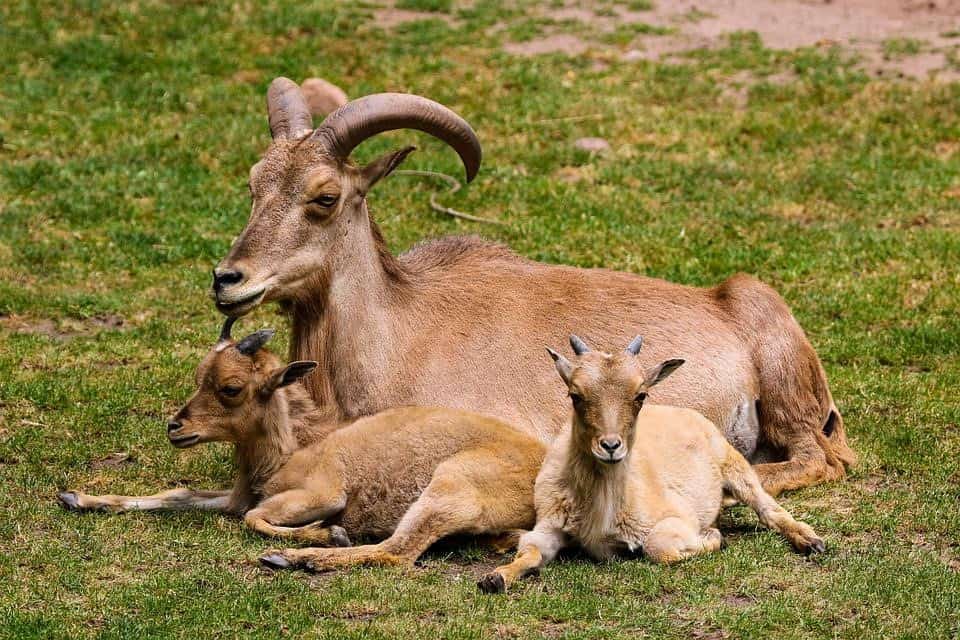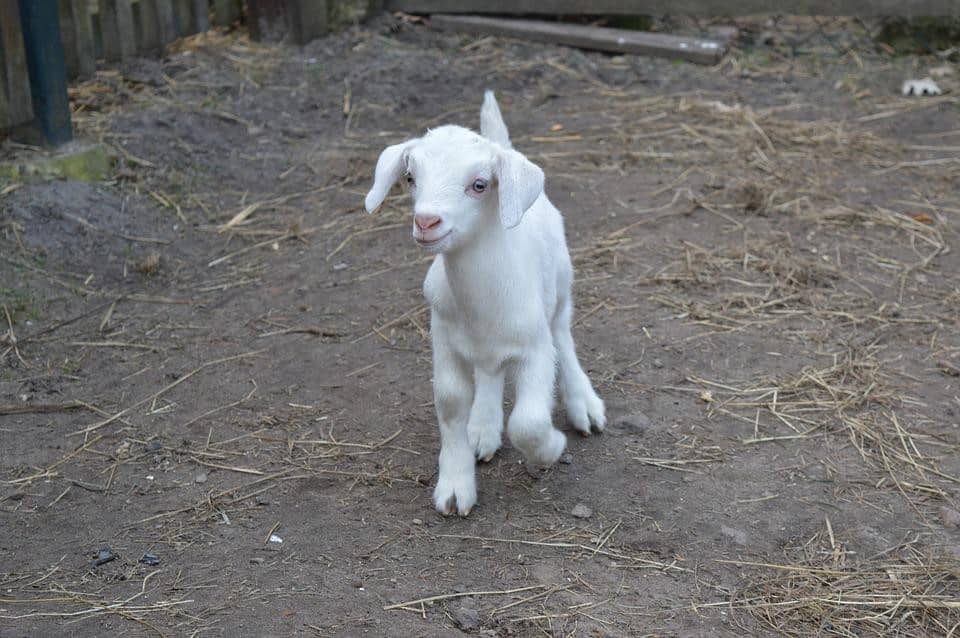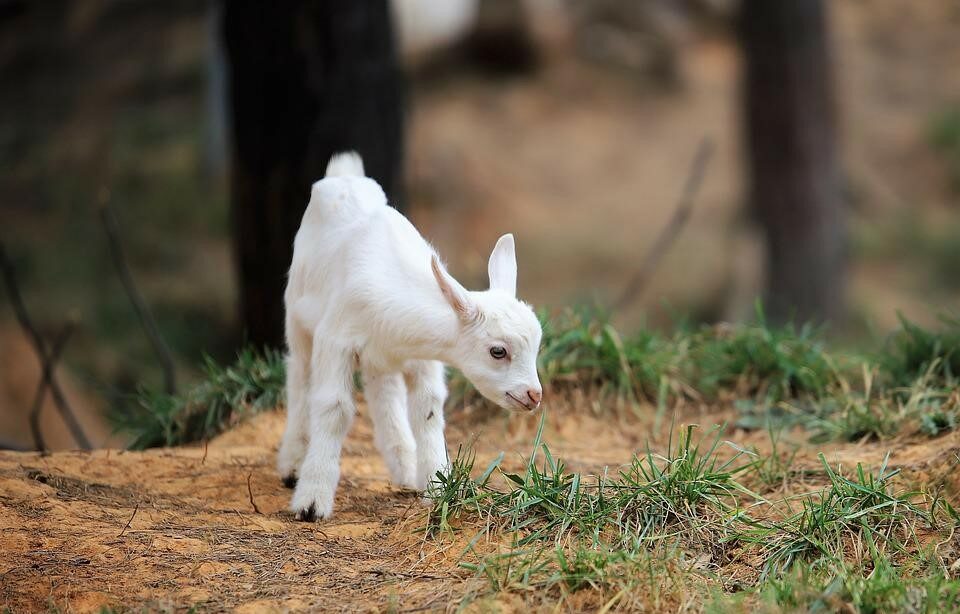Breeding and raising goats can be both fun and complicated. Like with the young of almost every animal, the first few days of a baby goat’s life are extremely crucial to its survival. So, when can a baby goat go outside? It needs its mother, but it also needs to be kept warm and safe from other animals and the weather.
However, since goats are social creatures, keeping a kid in isolation might be detrimental to its own health. The goat kid needs to go out to play, browse, and forage along with the other goats.
Let’s take a quick look at this and how you can best care for your baby goats.
When Can Baby Goats Go Outside?
Most baby goats can go outside and play in the elements as soon as they are born. Many goats are born outside. But, to be mindful of the weather, many wait until when they are two weeks old. These cute little furry creatures are too fragile and susceptible to cold elements before then. Baby goats younger than two weeks can easily catch hypothermia or suffer frostbite within an hour if left unattended in temperatures under 30°F.
To keep themselves warm, baby goats need to jump up and down and run around. A well insulated barn is warm enough for most baby goats to survive during cold temperatures. Though, if it is very cold, many people will turn to alternative measures to keep the newborns healthy. Also, some goat breeds are smaller than others. These tiny kids are looked after even more closely.
Tips on How to Keep Baby Goats Warm
You can take several steps to keep your baby goats warm and safe. The first and most obvious step is to let them nurse on their mothers. However, no matter how caring the mother is, baby goats can catch hypothermia in extremely low temperatures. As such, additional steps must be taken to make their living quarters more favorable to them.
Keep Their Shelters Dry and Warm
Goats of any age can get cold, sick, or succumb to the elements if they stay wet. Therefore, it’s extremely important to ensure that your baby goats have a shelter within which they can stay and remain warm and dry. Consider a heat lamp for baby goats if the shelter has drafts or if the temperature inside the shelter is too cold. The most important part of a baby goat living through its first hours of life is to completely dry off, especially in the cold.
However, if water soaks through that initial layer of protection, it gets to the skin. Once their hair is saturated, it becomes much harder for the kid to warm up, and this causes them to shiver and they could eventually develop a cold or even hypothermia if the situation isn’t corrected. Several signs might indicate hypothermia in baby goats, including acting lethargic and being extremely cold to the touch.
Hypothermia is dangerous for any living creature. This is when the body’s core temperature falls below its normal temperature. Once that happens, the vital organs start shutting down and stop functioning as normal. Without immediate intervention, hypothermia can lead to death. Depending on the breed, kids may develop a thick layer of fur that helps to protect them from the cold a few days or weeks after they are born.
Whenever you notice these signs, your goats may be suffering from hypothermia or it may become too cold to fight off any other illness. It extremely important to take them someplace warm and dry immediately.

Raise Their Sleeping Area Off the Ground
Cold air tends to settle down at ground level, which is exactly where your baby goats may be laying down and attempting to stay warm. This can cause them to become too cold and get sick.
One of the best ways to keep this from happening is to give them a raised sleeping area. There are two good reasons why this is a wonderful idea:
- A raised sleeping area is off the ground, which in cold climates is often frozen
- Warmer air tends to rise higher than cold air, which means that the goats might enjoy some level of increased warmth in a raised sleeping bed
Raising the sleeping area for your goats doesn’t have to be complicated. It can be as simple as laying down a few wood pallets on which your goats can climb and sleep. Goats are natural climbers, even baby goats, and this raised bed will give them something to jump onto as they go to sleep.
Be mindful of the type of bed. A raised cot, for example, will not provide much relief from the cold if the goats are only separated from the cold air by a thin layer of material.
Insulate the Raised Sleeping Area
To make things even warmer for your goats, you can insulate their sleeping area. After all, a hard wooden sleeping area, albeit raised, might not be that much better than the cold, hard ground.
One of the best ways to improve your goat’s living quarters is to provide them with some kind of insulation to go with the raised sleeping area. This can be as simple as laying down some straw.
This kind of insulation is excellent because it provides the goats with warmth and comfort, and it can also provide an area to soak up any water or moisture that may be in their fur. With any type of bedding, you will need to clean the goat’s sleeping area often to remove moist and soiled bedding.

If you leave soiled bedding for too long, it might get moldy and eventually create a musty, unhealthy environment. It’s important to have this bedding removed and replaced with fresh straw when necessary.
Every couple of weeks or so should do the trick, depending on the season. In winter, your adult and baby goats will be indoors more than usual, and their sleeping quarters will need more frequent cleaning.
Keep Goats Well Fed
Baby goats have several ways through which they can generate additional heat. They can:
- Jump and run around
- Snuggle up to their mothers when they lie down
- Live in a warm and dry shelter
Another way they can generate additional heat is by eating and staying well-fed. How much and what do goats eat? In general, goats eat up to 4% of their own body weight and, as such, need to be fed frequently. The same goes for baby goats, although the food could differ depending on their age.
The best way to keep them well-fed is to allow them to suckle from mothers as much as possible, which calls for keeping the mother goat well fed. Another way is feeding them through the bottle with a milk replacer or goat’s milk. Bottle feeding is something you would have to do yourself. This is a good way to achieve two things:
- Keep the newborn goat well-fed
- Feel their body temperature through touch (as mentioned, if the baby goats are cold to the touch, they might be developing hypothermia)
When Can I Let Baby Goats Outside
Whether they are baby bottle goats or nursed from their mother, baby goats can be allowed outside as soon as the weather allows. If it is cold, keep baby goats indoors until they at least 2 weeks old.
It’s important to note, as a goat owner, that goat babies need exercise to develop their muscles and bone structure. You need to let them play outside as often as possible. This can be difficult to do when it’s extremely cold, especially for smaller goat breeds such as pygmy goats, nubian goats and Nigerian dwarf goats.
However, once your baby goats get to two weeks old, they can safely go outside even in the cold. When it is too cold, you can provide them with extra protection by bringing them inside and keeping them next to a heat lamp to help regulate their body temperature. In most conditions, your baby goat can go outside as much as they need to once they get to two weeks of age.
Whether you are raising goats for profit or enjoying them on a smaller scale on your farm for milk, meat or as pets, learn more about baby goat care so they are safe and healthy.

